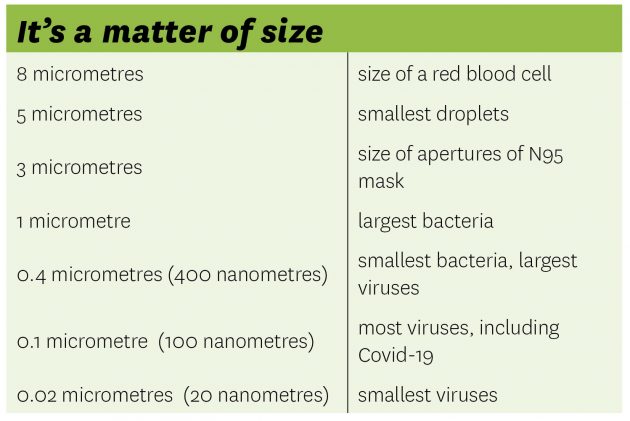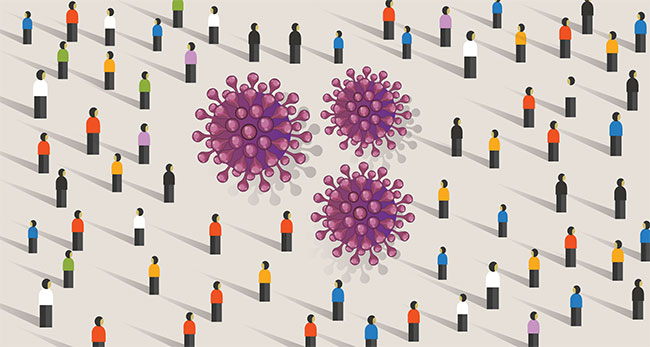
It’s a simple fact of life: All organisms must find the resources to maintain and reproduce themselves. The autotrophs passively soak up all that they need; the symbiotes learned to live together. Everything else is predatory or parasitic, consuming other living things from without or from within. In the end, many of us will be the victim of one or the other and then the saprophytes will have their turn. Until that day comes, we all want to dodge those bullets.
Over the long history of Homo sapiens, many of our kind have been killed and eaten by wolves and cougars – predatory threats we can see, hear, smell, and run away from (if we’re quick).
Parasites are sneakier. They take what they need from us while we’re still alive and hope we don’t notice. People can be parasites. In ancient Greece it was what they called professional dinner guests. Creatures like bedbugs, ticks, leeches and worms are significantly smaller than the moocher at supper, but we can still see them – feeding on us and growing fat, giving us nothing of value back.
As nasty as the bedbugs are, it is the “invisible” parasites – one-celled or no-celled – that cause us the most kinds of trouble. Bacteria and viruses are the worst! They’re the most subversive of the free-loaders, habitually taking advantage of our generosity, slipping in past the gates under cover of their size. We give them free food, a warm place to shelter and everything they need to make their babies, and what do they do for us? Well, if we’re lucky, they don’t kill us. For sure they can cause us a whole lot of grief – like the uninvited dinner guest from hell who starts arguments and instigates the overly-sensitive to overreact. Feelings get hurt, tempers flare and the rest of the guests turn on each other. No good can come from this kind of party. The most successful of the parasites make sure we foist their offspring onto vulnerable others in our social circle before they exit the scene, leaving the host exhausted, their home damaged, their spirits diminished.
Pathogens are found in the environment – food, water, air and other living things like bats and bugs and pigs and people. They gain access to our insides by way of natural openings with wet (mucosal) epithelium – eyes, nose, mouth, respiratory system and GI tract – or through a breach in keratinized skin. A mosquito bite can deliver parasites directly into a host’s bloodstream. Plasmodium, the cause of malaria, burrow inside red blood cells and feast on the “globins’” part of our hemoglobin. They spit out the iron, set up house in the liver and make lots of babies who love to eat globins.

Group A streptococcal bacteria can flourish on our skin and in our throats, but when they invade beyond these barriers, multiplying and excreting their toxins, the very worst of things can happen. Strep throat becomes Scarlet Fever becomes Rheumatic Fever becomes Rheumatoid Arthritis, with structural damage and immune dysfunction that never go away.
Respiratory viruses such as colds, influenza and Covid-19, like all viruses, don’t eat anything or make anything. Once they’re inside, they don’t sit down for supper – they get straight to the heart of it, hijacking our cells and turning them into machines for making their babies.
As our immune system ramps up to fight an infection like Covid-19, many weapons are brought in for the battle, creating a dangerous scene that can take unexpected turns. Components of the complement system can inadvertently trigger the clotting cascade, with many tiny clots blocking the microcirculation of the brain or the toes. Debris from the fight can clog up the kidneys and shut them down. Profound inflammation can cause alveoli to drown in their own fluids.
What can be done to fight an infection? We must interrupt some process of the organism’s life-cycle. Malaria parasites are susceptible to chloroquine. This drug interferes with Plasmodium’s ability to spit out the leftover iron. They are poisoned by the heme and they die. Antibiotics can work to disrupt the synthesis of bacterial cell walls, so they and their babies become deformed, and they die.
All that viruses can do is latch onto the exposed wet cells of our orifices and sneak inside, forcing our tissues to make millions of free copies of them. They count on us to deliver these to new customers, so their family line can live on in the greatest tradition of moochers.
Pharmaceutical treatment of viral infections is tricky because it’s hard to kill something that isn’t technically alive, but stopping them dead in their tracks is easy. If we become host to a pathogen we must ensure that NONE of their babies are passed along to ANYONE. Trouble is, we don’t always know that we are infectious. Current research is suggesting that 20-40% of Covid-19 infections result in mild or no symptoms. For comparison, Polio (poliomyelitis), an enterovirus, is asymptomatic in up to 70% of cases. Numbers like these explain why both diseases spread so far and wide.
If you want to stop this pandemic, assume you are infectious and behave accordingly. Not feeling so good? Stay home and remember that you will be spreading the virus when you breathe, talk, sing, cough and sneeze, (but mostly when you cough) and less so when you breathe through your nose.
The viruses are encased in globs of mucus and water, so when you’re not over 6 feet away from your patients, wear a mask – a mask that fits right – ALL OF THE TIME. (“Transmission of COVID-19 virus by droplets and aerosols: A critical review on the unresolved dichotomy” – NCBI by M. Jayaweera 2020 doi: 10.1016/j.envres.2020.109819)
They’re not a perfect barrier but it will make a difference for your patients – so will the simple act of washing hands.
The more contacts you have in a day, the more important these measures are – because you never want to be the person who foists the world’s worst dinner guest onto anybody else.
DR. dawn armstrong is a graduate of CMCC and has been in practice for over 30 years. She is currently focused on promoting life-long learning and professional development and has created a continuing education course – Clinical Record Keeping: A Hands-On Approach. Learn more at auroraeducationservices.ca.
Print this page
